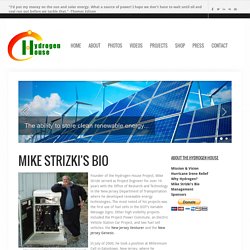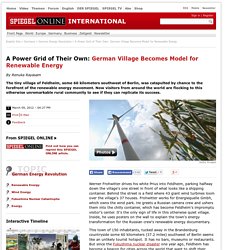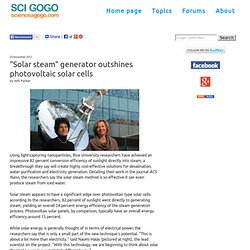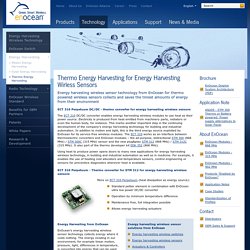

Zero-blade technology. Hydrogen House Project: Mike Strizki's Bio - Hydrogen House Project. Founder of the Hydrogen House Project, Mike Strizki served as Project Engineer for over 16 years with the Office of Research and Technology in the New Jersey Department of Transportation where he developed renewable energy technologies.

The most noted of his projects was the first use of fuel cells in the DOT’s Variable Message Signs. Other high visibility projects included the Project Power Commute, an Electric Vehicle Station Car Project, and two fuel cell vehicles: the New Jersey Venturer and the New Jersey Genesis. In July of 2000, he took a position at Millennium Cell in Eatontown, New Jersey, where he completed a world range record with the New Jersey Genesis, a distance of over 400 miles on a single refueling.
HYDROGEN FREE ENERGY OFF THE GRID HOUSE SOLAR POWERED 2/2. A Power Grid of Their Own: German Village Becomes Model for Renewable Energy. Werner Frohwitter drives his white Prius into Feldheim, parking halfway down the village's one street in front of what looks like a shipping container.

Behind the street is a field where 43 giant wind turbines loom over the village's 37 houses. Frohwitter works for Energiequelle Gmbh, which owns the wind park. He greets a Russian camera crew and ushers them into the chilly container, which has become Feldheim's impromptu visitor's center. It's the only sign of life in this otherwise quiet village. Inside, he uses posters on the wall to explain the town's energy transformation for the Russian crew's renewable energy documentary. This town of 150 inhabitants, tucked away in the Brandenburg countryside some 60 kilometers (37.2 miles) southwest of Berlin seems like an unlikely tourist hotspot. Feldheim is the only town in Germany that started its own energy grid and gets all of its electricity and heating through local renewable sources, primarily wind and biogas.
Energy without Carbon. Sodium nitrate for solar thermal plants - BASF - Monomers. Sodium Nitrate and Nitrite. 45453. Unveils super-efficient solar-energy technology. "Solar steam" generator outshines photovoltaic solar cells. 20 November 2012 by Will Parker Using light-capturing nanoparticles, Rice University researchers have achieved an impressive 82 percent conversion efficiency of sunlight directly into steam; a breakthrough they say will create highly cost-effective solutions for desalination, water purification and electricity generation.

Detailing their work in the journal ACS Nano, the researchers say the solar steam method is so effective it can even produce steam from iced water. Solar steam appears to have a significant edge over photovoltaic type solar cells: according to the researchers, 82 percent of sunlight went directly to generating steam, yielding an overall 24 percent energy efficiency of the steam generation process. Photovoltaic solar panels, by comparison, typically have an overall energy efficiency around 15 percent. Thermoelectric Generator. News about the world's leading thermoelectric advances. Tellurex Announces New Management Assignments Tellurex Corporation Launches Production of its Alternative Energy Thermoelectric Power Generator - tPOD1™ Tellurex Corporation to Exhibit its Alternative Energy Power Generator tPOD1 at Lighting Africa Conference November 13-15, 2012.

Recently Launched tPOD Products by Tellurex Corporation are Seen as Dependable Solutions for Emergency Lighting and Dead Cell Phone Charging When Natural Disasters Occur Tellurex Corporation Announces Launch of tPOD Web Site: Offers Alternative Energy Products That Light Up Rooms and Charge Dead Cell Phones. Tellurex Corporation Elects New Officers and a Director Over 1,300 Enthusiasts Kickstart the Tellurex tPOD1™ Off-Grid Power Generator Tea Candle Powered Generator Charges Dead Smartphones and Lights Homes in Off-Grid Villages Tellurex Peltier Cooling Tech Protects Consumers' $23 Billion Annual Investment In Wine Powerful Megacooler From Tellurex Offers Improved Organ Transportation And Laboratory Sample Control. Thermoelectrics ‘pass new milestone’ Engineering PbTe on the panoscale making it exceptionally efficient at turning waste heat into electricity © Mercouri Kanatzidis Researchers in the US claim to have passed a new milestone in thermoelectrics with a material that converts heat to electricity more efficiently than ever before.

The new thermoelectric material, which employs ‘panoscale’ structuring to scatter phonons, has a figure of merit (FoM) some 20% better than previously achieved. Thermoelectrics convert heat to electricity and can, therefore, ‘harvest’ waste heat from the environment. When one end of a thermoelectric material is heated, electrons flow to the cooler side, creating a voltage across the material that can be tapped for electricity. The materials are rated according to the FoM, which depends on several properties. Heat passes through a material in the form of waves, or phonons, which have different wavelengths. Thermoelectric materials on the basis of bismuth telluride Bi2Te3, Ingots and crystals (pellets) of bismuth telluride. Thermoelectric materials on the basis of bismuth telluride Bi2Te3 The bismuth telluride Bi2Te3 compound is a semiconductor material, possessing likewise р- and n – conductivity.

Moreover, bismuth telluride crystals bear a remarkable quality. If, being prepared in a certain way semiconductor Bi2Te3 crystals (they are also called «pellets») of the n- and р-types of conductivity are alternatively joined sequentially with each other by metal conductors, and this «package» is placed between two thermally conductive ceramic plates, then you get a device which is called the thermoelectric cooling module (TCM). Thermo Converter for Energy Harvesting Wireless Sensors. The ECT 310 DC/DC converter enables energy harvesting wireless modules to use heat as their power source.

Electricity is produced from heat emitted from machinery parts, radiators or even the human body, for instance. This marks another important step in the continuing development of the company’s energy harvesting technology for building and industrial automation. In addition to motion and light, this is the third energy source exploited by EnOcean for its service-free wireless modules. The ECT 310 works as an interface between thermoelectric converters and EnOcean modules – the all-purpose, bidirectional STM 300 (868 MHz) / STM 300C (315 MHz) sensor and the new plug&play STM 312 (868 MHz) / STM 312C (315 MHz).
It also part of the thermo developer kit EDK 352 (868 MHz). Using heat to produce power opens doors to many new applications for energy harvesting wireless technology, in building and industrial automation as well as in medicine. Free Energy Nitinol Heat Machines invented in the early 1970.flv.